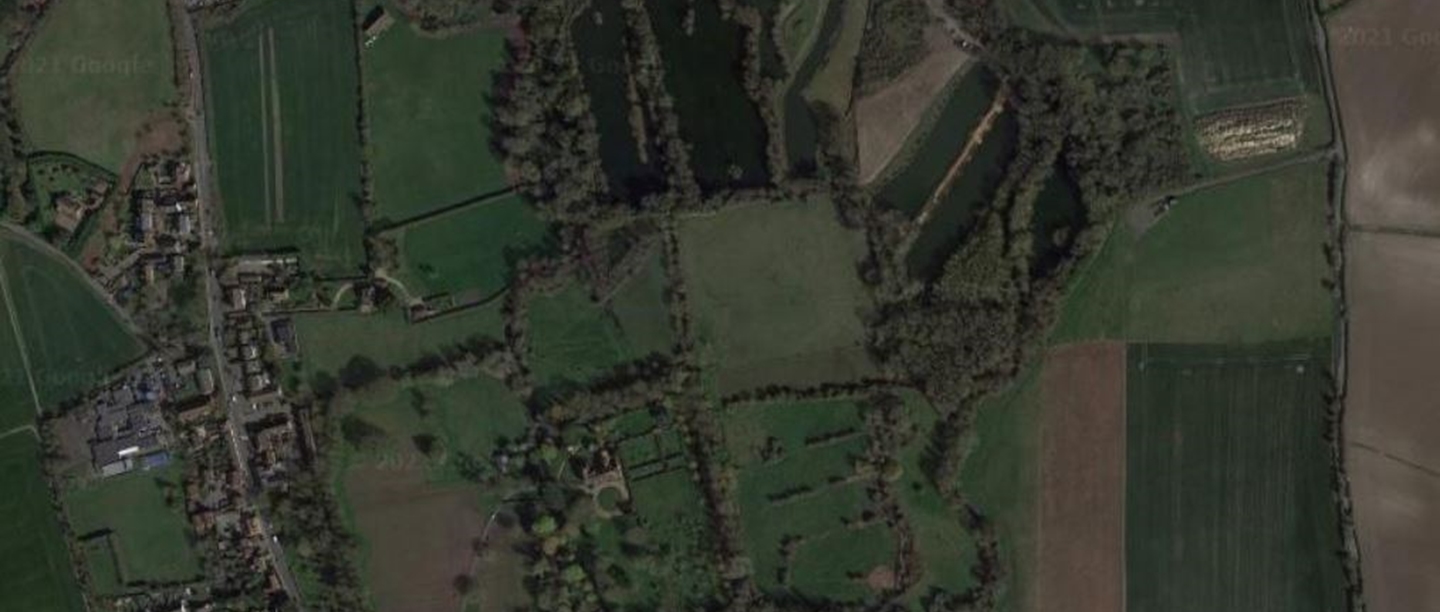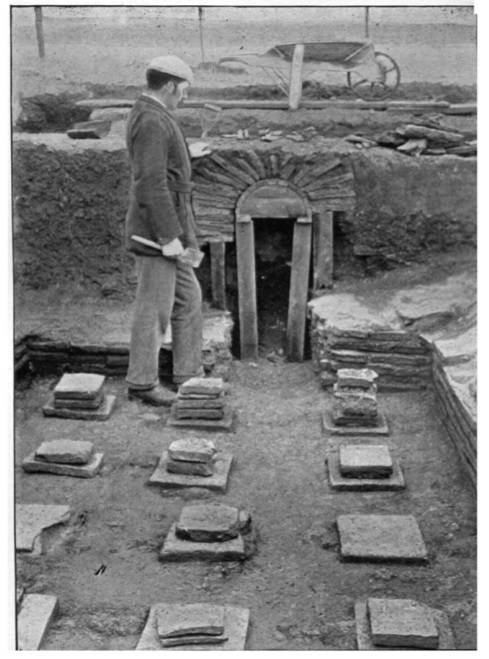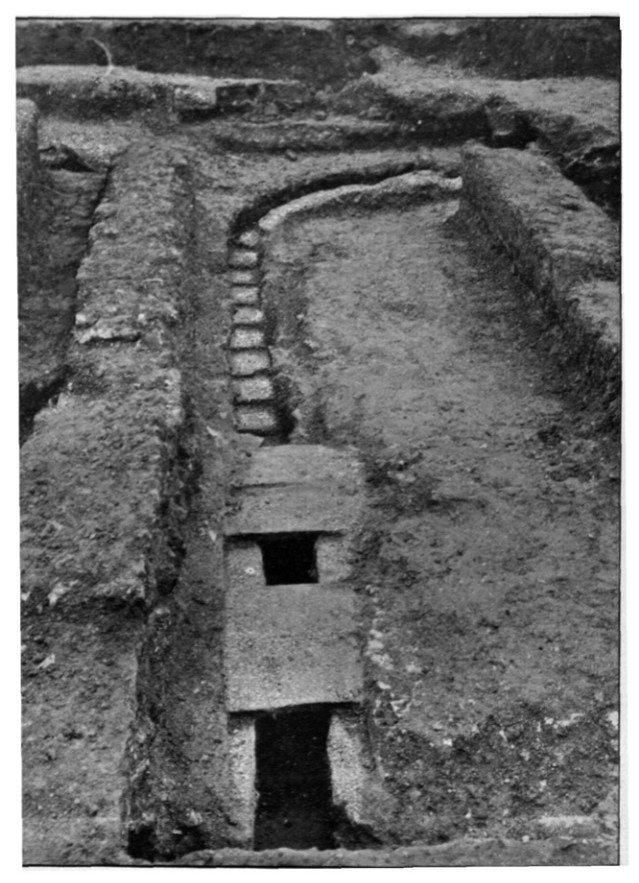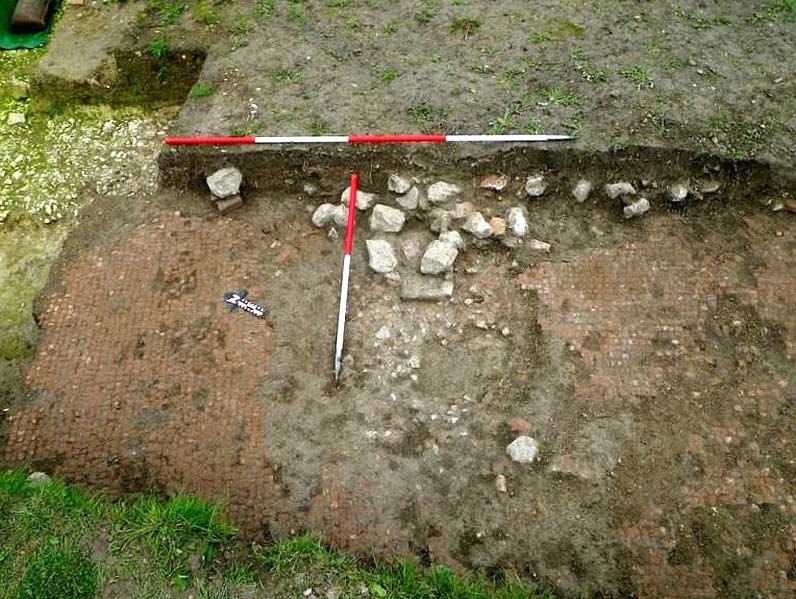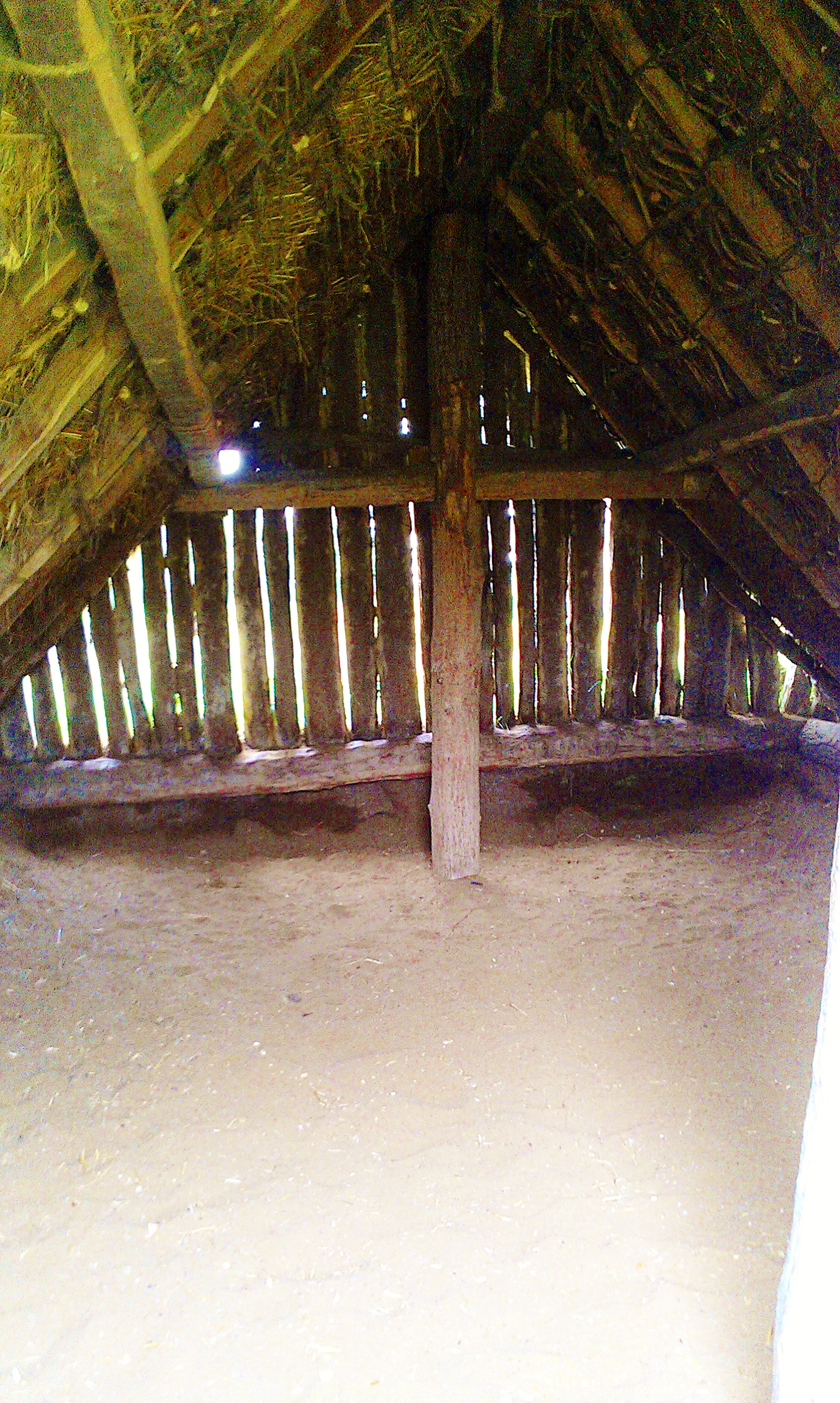What did the Villa look like?
Darenth Villa is one of the largest villa complexes in England. It had over 70 rooms! There was also a bath house and what has been interpreted as a swimming pool, ornamental pool, walled gardens, and lots of other outbuildings and workshops.
Evidence from the Villa
Darenth Villa doesn’t have the elaborate mosaics and other expensive decorations found at other Roman villas. Despite this, archaeologists have found lots of evidence that suggests it was a very wealthy settlement. This includes painted wall plaster, ornate floors, bronze sculptures and many Roman coins. There’s also evidence of window glass and a large aisled building which may have been one of the largest in rural Britain. The villa has a large entrance and courtyard which probably had a shrine and a well.
Click on the images below to find out more about some of the features found at Darenth Villa.
Crafts and Skills at the Villa
Archaeologists have found lots of clues about how the outbuildings at Darenth Villa were used. The tanks they found could have been part of a 'fulling' factory for working wool.
There are also two large corn-dryers that were used to dry out crops. Dried crops like corn lasted a lot longer and could be stored over the winter.
In 1972 archaeologists found evidence of a wood-lined water channel which probably ran from the river Darent. They also found millstones at the villa. These two things together suggest that there might have been a working mill at the settlement too.
